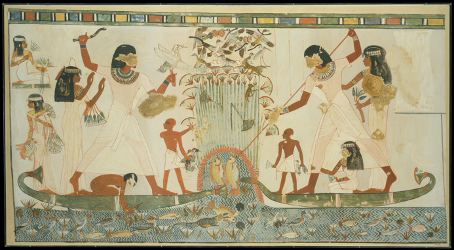Geirr Kristian Homme Lunden MA
PhD candidateCurriculum Vitae
I started my studies of Egyptology at Swansea University in Wales. Here, I completed my Bachelor’s Degree before moving to the Netherlands and Leiden University to enrol in the Master’s Programme Classics and Ancient Civilizations, again with a specialisation in Egyptology. I wrote my thesis on what tombs were conceptually in the mind of the ancient Egyptians, how these ideas were made manifest in the construction of said tombs, and how this impacted the relationship ancient Egyptians had with their ancestors. This study was focussed on the early historic period (c. 3100 – 2613 BCE). Since September 2020, I have been a member of the eikones Graduate School and the University of Basel.
Current Project
Expressiveness from Uniformity
Variety in emic reinterpretations of marsh motifs in ancient Egyptian elite tombs
My current project builds upon my previous research on what tombs were in the eyes of the ancient Egyptians, compared to what they are to modern researchers. I now focus on the ancient Egyptians’ relationship with their own art as a tradition. Modern interpreters of ancient Egyptian art have historically painted it as a tradition adhering to uniformity – avoiding innovation when it comes to the selection of the motifs decorating their tombs. It is nonetheless recognised that the act of directly copying images was an exception rather than the norm, and it is famously said in Egyptology that no two tombs are ever the same. It is therefore clear that there was a strong presence of creativity in the ancient Egyptians’ approach to art, but simultaneously few attempts to notably deviate from the standard as we see it in modern times. This begs the question: How did the ancient Egyptians engage with their own art history?
As a subject, I am working with depictions of the Nile marsh. These pictures display a variety of activities taking place in the lushest and seemingly most enjoyable environments ancient Egypt had on offer. They are commonly found in the tombs of the ancient elite throughout most of pharaonic history, which opens up for the possibility of a diachronic study. The idea is then to examine selected samples of the marsh scenes as standalone images, within their context in the individual tombs, within their geographical and contemporary context, within their geographical and past historical context, within their nation-wide contemporary context, and compared to the tombs found in places and periods where the marsh motif seems to have been deliberately expelled from the standard repertoire of images used to decorate a tomb.
Quick Links

